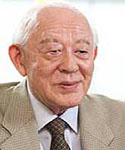
|
Looking
Back at the 4th Nagasaki Global Citizensí
Assembly for the Elimination of Nuclear Weapons
Hideo Tsuchiyama
Chairman, Organizing Committee, Nagasaki
Global Citizensí
Assembly for the Elimination of Nuclear Weapons
 |
An optimistic and heightened atmosphere
permeated the 4th Nagasaki Global Citizens' Assembly for
the Elimination of Nuclear Weapons, held for three days
from February 6, 2010. This is because global trends concerning
nuclear weapons have changed substantially from the time
of previous assemblies (held in 2003 and 2006) due mainly
to changes in the U.S. nuclear policy resulting from the
election of President Obama.
"We must not miss this opportunity" was the
common recognition held by the representatives of NGO's
who assembled in Nagasaki from around the world as well
as the residents of Nagasaki. All participants believed
that through the combined efforts of NGO's and citizens
they must develop the emerging trends toward nuclear abolition
into solid and concrete practices. Participants also shared
a firm resolve to deliver a powerful message from Nagasaki,
a city that suffered A-bombing, to the Review Conference
of the Nuclear Non-Proliferation Treaty (NPT), to be held
in May 2010. This determination was repeatedly expressed
in the speeches delivered at the Opening Session by five
representatives of overseas NGO's. While expressing expectations
for the Obama administration, the speakers also mentioned
that we should refrain from expecting too much of the
administration.
At this 4th Assembly, while the number of workshops was
reduced to three, a plenary session was organized with
an eye toward reflecting discussions held there at the
Review Conference of the Nuclear Non-Proliferation Treaty.
I believe that this was effective in making discussions
extremely substantial and rewarding. It was particularly
meaningful that we were able to identify problems involved
in nuclear dependence of non-nuclear weapon states, that
is, the problems with the nuclear umbrella that citizens
of non-nuclear weapon states must address, as well as
challenges involved in the Convention on the Prohibition
of the Development, Testing, Production, Stockpiling,
Transfer, Use and Threat of Use of Nuclear Weapons and
on Their Elimination (NWC). Based on awareness of these
problems, we were also able to suggest policies toward
solutions. During the Assembly we also clarified the limitations
of the NPT system that nuclear weapon states intend to
maintain and reinforce. We concluded that even though
it is important to sustain the NPT system, this alone
cannot prevent nuclear proliferation.
Concerning the succession of present nuclear abolition
movements and creation of new movements, participants
in the Assembly have confirmed that thorough promotion
of peace education should be the foundation of such movements,
even though we should introduce multi-faceted approaches
to involve diverse generations in the movements.
Finally, I would like to express my heartfelt gratitude
for the coordinators and panelists for holding lively
and heated discussions, audience members for eagerly asking
many questions (some asking even after the end of scheduled
Q&A sessions), and all other parties for supporting this
Assembly.
Thank you very much.
|
|
|
|